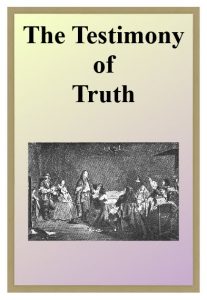Information on The Testimony of Truth
Birger A. Pearson writes, “The original title of this tractate, if there was one, is unknown. It is possible that a title was supplied at the end of the tractate, but the last two pages of the codex are lost. The title now in regular use has been editorially assigned on the basis of a major theme found in the tractate (‘word of truth,’ 31,8; ‘true testimony,’ 45,1), part of its polemical thrust. The author is intent upon presenting his version of the truth – a radically encratic Gnostic Christianity – and contrasting this with the false opinions and practices of his ‘heretical’ opponents. His polemics are presented in the form of rhetorical antitheses (light-darkness, knowledge-ignorance, incorruptibility-corruption, etc.).
The author’s opponents are easily identifiable on the basis of how they are described. They consist for the most part of members of the catholic (‘orthodox’) church, who clearly constitute a majority of Christians in the author’s locale. Interestingly enough, the author’s opponents also include fellow Gnostics, such as the Valentinians, Basilidians, Simonians, and others, with whose practices he vehemently disagrees.” (The Nag Hammadi Scriptures, p. 613)
Birger A. Pearson asks, “Who was this man? He was surely well schooled in the Valentinian tradition, even though he included Valentinians among his opponents, so we might look upon him as an ex-member of the Valentinian school. As it happens, Clement of Alexandria provides us with information in his Miscellanies (3.85-95) on a teacher of radical encratism, Julius Cassianus, who is said to have ‘departed from the school of Valentinus,’ presumably because he had come to disagree with Valentinian practices.
